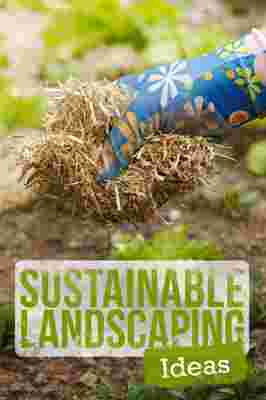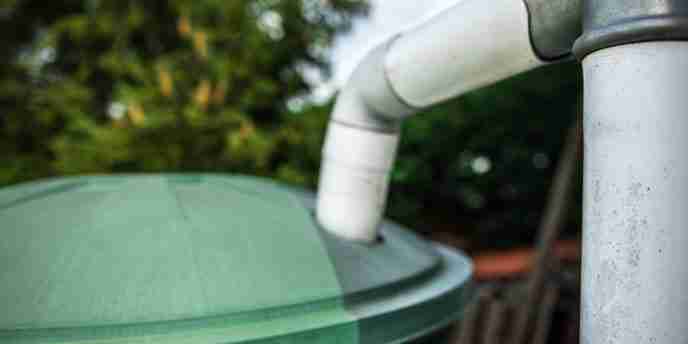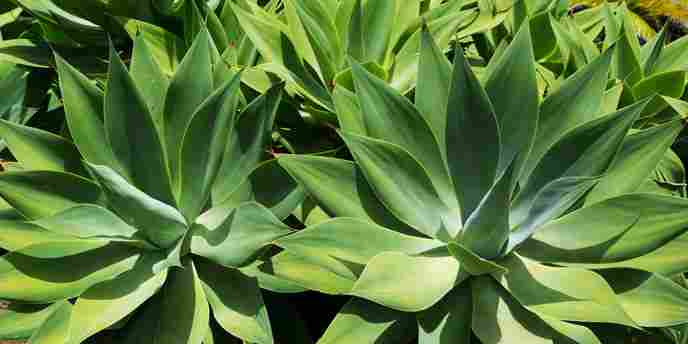May 11,2022
6 Sustainable Landscaping Ideas for a Greener Yard
by David Stewart

Creating a beautiful yard takes a lot of hard work. And part of that hard work is taking the time to incorporate a few sustainable landscaping ideas that will allow you to keep your yard green without using more resources or damaging your local environment.
Wondering what you can do to make your yard a little greener? Take a look at these six green landscaping and gardening ideas.
Use Rainwater to Water Your Plants

Rather than using a sprinkler or garden hose to water your landscaping, an eco-friendlier alternative is to use rainwater. You can build a basic rain barrel using a 32-gallon trash can and a little elbow grease, but there are pre-made options out there if you prefer to hit the ground running. In either case, your rain barrel will include a spigot you can use to fill up a watering can or connect to a super-efficient drip irrigation system.
Install a Drip Irrigation System
Using collected rainwater with your own DIY drip irrigation system is the least expensive, most eco-friendly landscaping idea out there. Instead of using sprinklers to spray droplets of water over one area, a drip system trickles out a small amount of water throughout a garden using a pipe or tube. This simple DIY design should work for most gardens, though you can also spring for an irrigation system kit that includes an automated timer, making your watering even more efficient.
“Has watering window boxes or pots on steps or porches been a hassle? With punch-in connecters on a drip line, micro-tubing, and micro-emitters that have adjustable flow controls, you can water them through the automatic system and not be tied to a hand-watering schedule any longer.”
John Swaringen | Member of the Ecological Landscape Alliance
Populate Your Yard With Drought-Tolerant Plants
The average container plant needs watering a couple of times a day, but plants adapted to drought conditions may need watering as little as two or three times a month. By planting hardier plants, you can cut your consumption dramatically, saving more water and possibly more money on your water bill.

Here are a few green landscaping plants to consider:
Group Plants With Similar Needs Together
Just as low-maintenance plants can save water, so too can grouping those plants together, separate from those that require regular watering. If you have multiple garden beds to work with, group those plants with occasional watering needs in one bed so you know just how much water to give them. Some plants can even protect each other from pests and diseases when planted close to each other – this practice is called companion planting . Following this planting method throughout your yard and garden will help you avoid wasting water and pesticides, making for an overall greener landscape.
Use Compost to Retain Water
Your average bag of fertilizer may be helpful for growing plants, but the chemicals it contains can easily runoff into local streams and rivers, contributing to things like algal blooms . A more sustainable landscaping practice is to use compost for your plants’ nutritional needs. Using compost not only reduces harmful runoff, but also helps your soil retain water, saving even more H2O.
You can buy bags of compost at your local garden supply store, though the greenest way to acquire it is to make your own compost bin .
Look for Eco-Friendly Building Materials
When it comes landscape features, such as foot paths or garden beds, look for low-impact or recycled materials. A few sustainable landscaping materials we recommend:
The key to any sustainable landscaping design is to minimize water and energy use as much as possible. But that doesn’t mean you have to start removing large parts of your luscious lawn. With the eco-friendly landscaping ideas above, you can take the first steps to creating a beautiful yard that is green in more ways than one.
Looking for a few more ways to greenify your home? Check out these posts:
Have a few other tips for creating a sustainable landscape? Let us know in the comments.






